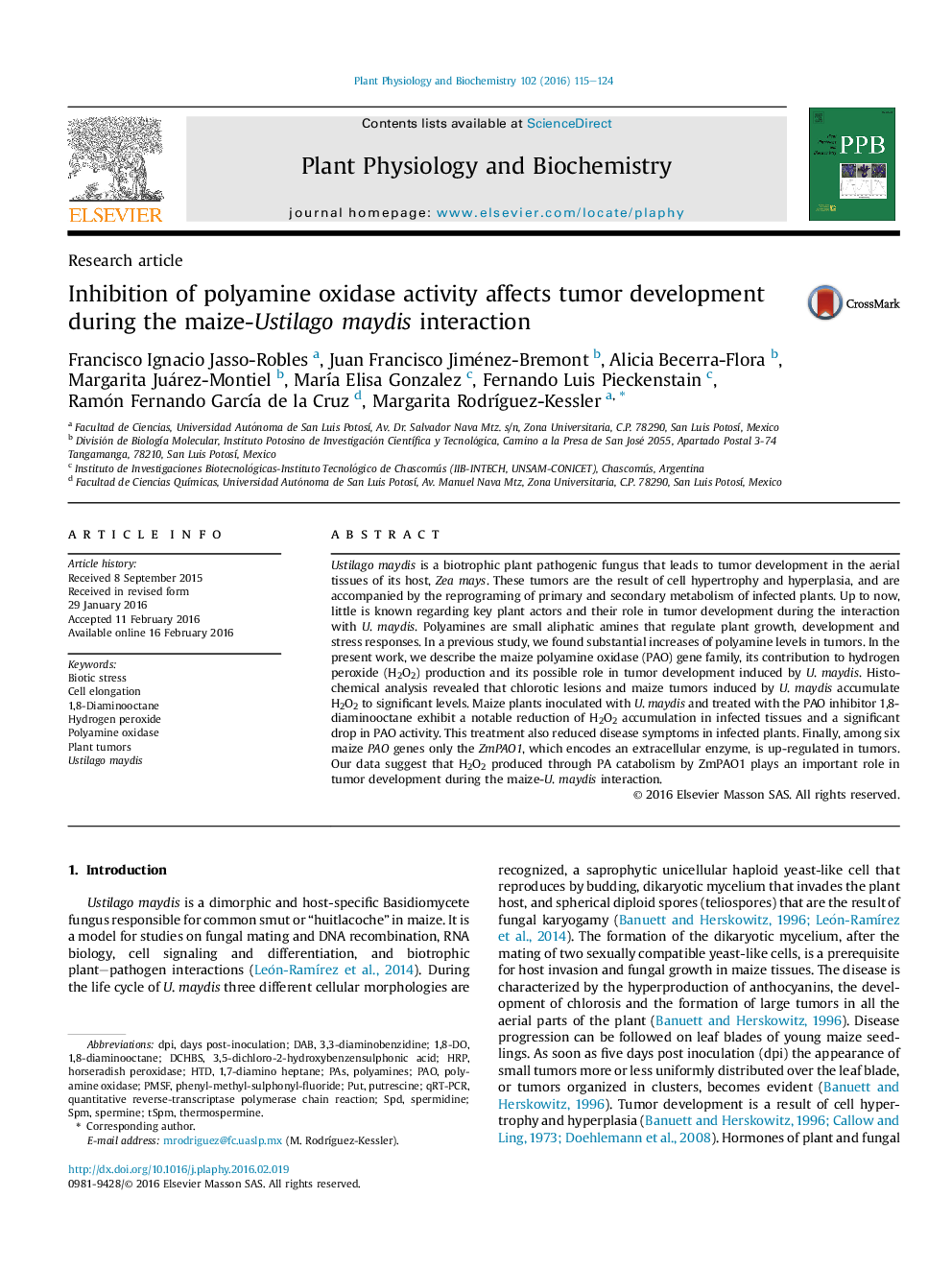| Article ID | Journal | Published Year | Pages | File Type |
|---|---|---|---|---|
| 2015696 | Plant Physiology and Biochemistry | 2016 | 10 Pages |
•Maize tumors induced by Ustilago maydis accumulate H2O2 to significant levels.•Polyamine oxidases contribute to the H2O2 accumulation in maize tumors.•Inhibition of PAO activity reduces H2O2 content and affects tumor development.•The maize PAO family is composed of six members closely related to the rice PAOs.
Ustilago maydis is a biotrophic plant pathogenic fungus that leads to tumor development in the aerial tissues of its host, Zea mays. These tumors are the result of cell hypertrophy and hyperplasia, and are accompanied by the reprograming of primary and secondary metabolism of infected plants. Up to now, little is known regarding key plant actors and their role in tumor development during the interaction with U. maydis. Polyamines are small aliphatic amines that regulate plant growth, development and stress responses. In a previous study, we found substantial increases of polyamine levels in tumors. In the present work, we describe the maize polyamine oxidase (PAO) gene family, its contribution to hydrogen peroxide (H2O2) production and its possible role in tumor development induced by U. maydis. Histochemical analysis revealed that chlorotic lesions and maize tumors induced by U. maydis accumulate H2O2 to significant levels. Maize plants inoculated with U. maydis and treated with the PAO inhibitor 1,8-diaminooctane exhibit a notable reduction of H2O2 accumulation in infected tissues and a significant drop in PAO activity. This treatment also reduced disease symptoms in infected plants. Finally, among six maize PAO genes only the ZmPAO1, which encodes an extracellular enzyme, is up-regulated in tumors. Our data suggest that H2O2 produced through PA catabolism by ZmPAO1 plays an important role in tumor development during the maize-U. maydis interaction.
Graphical abstractFigure optionsDownload full-size imageDownload as PowerPoint slide
